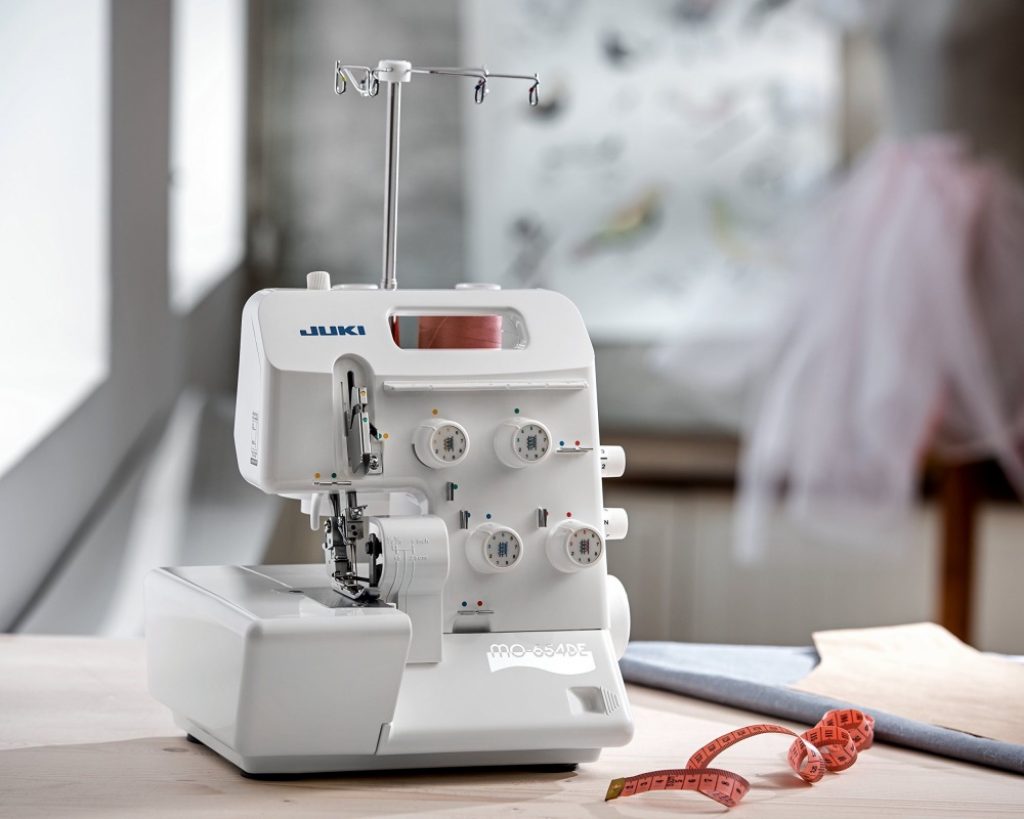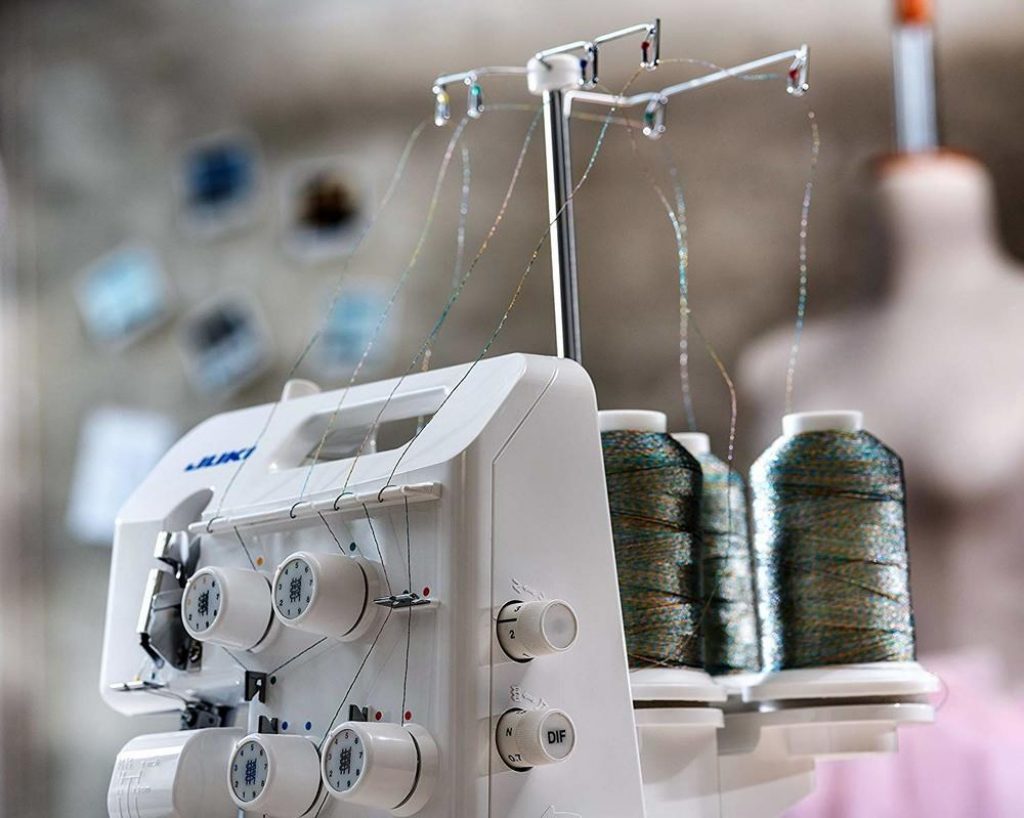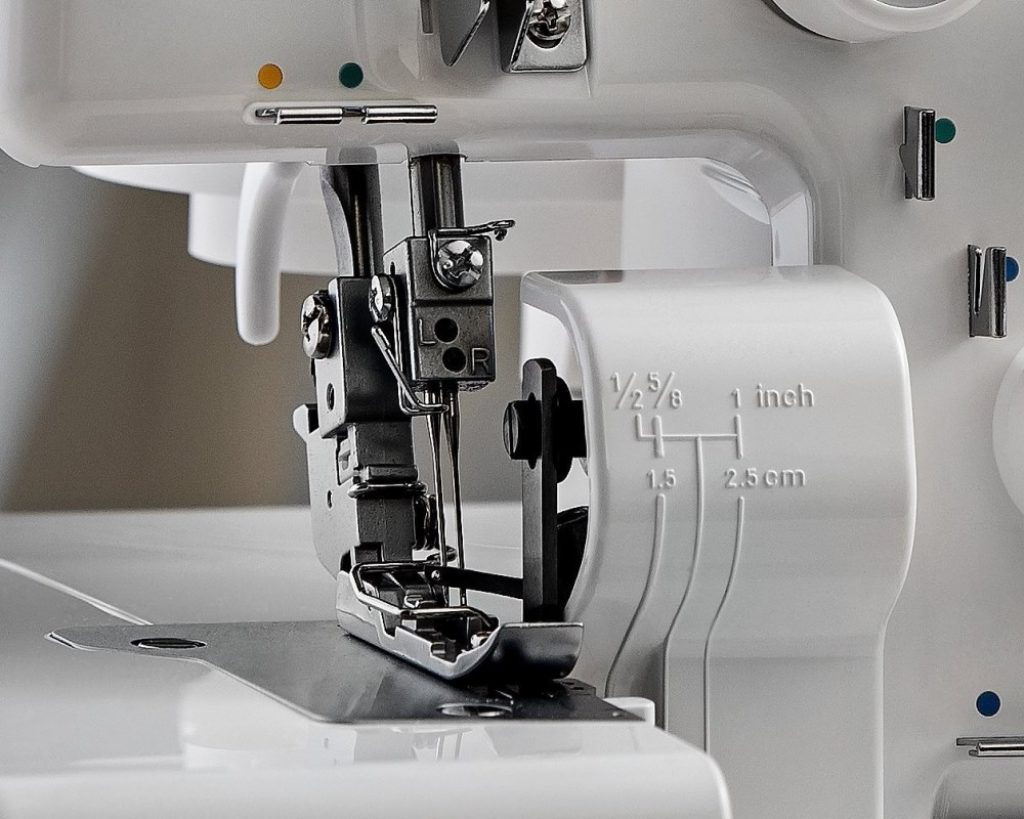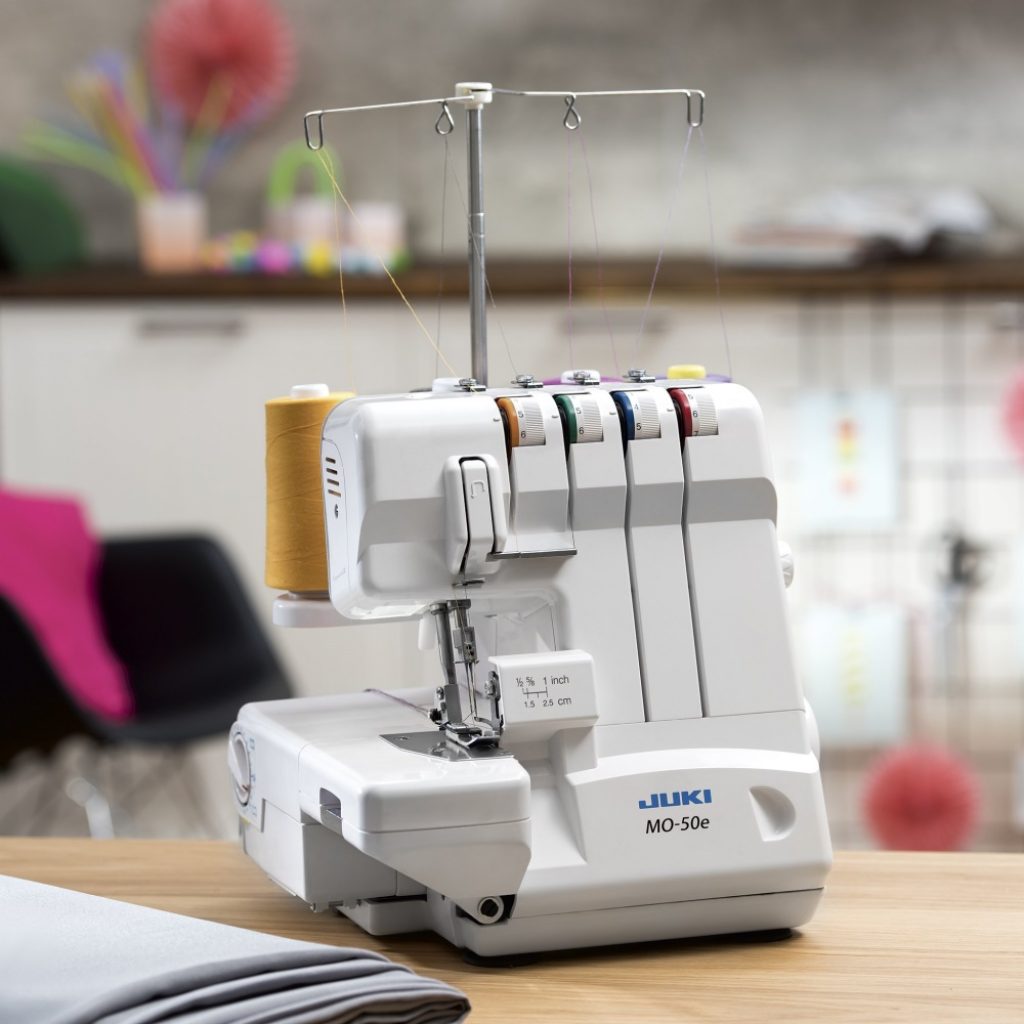

Whether you have an ambitious sewing project or you’re simply testing the waters with your new sewing hobby, getting one of the best JUKI sergers out there as your tool of choice can help your finished item look like a professional. Even though there is such a great variety of serger machines out there, we’re here to help you choose.
Before writing this guide, we’ve taken the time to go through the top 32 serger machines to help bring you the best ones—and from one of the best brands out there! From our Editor’s Choice, the JUKI MO654DE with its lightweight build of 15 lb and speed of 1500 spm to our budget pick, we’ve taken our best products and not only reviewed each to specific detail but also compared them with one another.
In our review, we consider each feature to be one of the most important—from each serger’s number of threads to its dimensions and weight to its individual speed and stitch length, we know what you’re looking for in a sewing machine. From our side-by-side comparison table to each in-detail review of the individual product, we’ve got you covered when it comes to detail. We know that the finer details are important in a sewing machine, which is why we’ve also given you a buying guide to help you choose the best one for you and your projects. We hope this article helps you get the right one for you, your project, and your budget.
More features: color-coded threading, thread tension adjustment, multipurpose presser-foot, built-in seam guide, cutting width adjustment
For a small but powerful machine in your corner, the JUKI MO654DE is a great fit. Not only is it pristine in function, with product features include the 2/3/4 thread capability as well as differential feed, adjustable length, and fabric versatility, it also is quite powerful—with a clean-cut powerful knife system which is backed by safety precautions dedicated to keeping you safe with every project.
The JUKI MO654DE is a perfect buy if you’re looking for an at-home serger that can be versatile enough to complete any task you throw at it. It gets projects done not only efficiently in little-to-no time, but it also has a built-in seam guide if you’re in the beginner range of sewers.
It is one of the best combinations of ease of use with high-quality precision that helps make it our Editor’s Choice. It also comes with a lightweight build to help you bring it to and from your lessons or wherever you want to sew.
More features: overlock width 9 mm, manual foot lift, adjustable foot pressure, automatic needle threading, upper looper converter, adjustable differential feed, automatic rolled hemming, safety lock
The Juki MO-1000 is not only our Runner’s Up and next-in-line when it comes to Juki sergers, but it is also highly popular with the crowd of professional sewers.
It is highly regarded as being a top-rated machine when compared with other sergers in its price range. This is due to its powerful workhorse ethic as well as its loaded feature list. From adjustable foot pressure to automatic rolled hemming, this user-friendly serger helps make difficult projects a breeze.
It also packs a punch when it comes to offering one of the most stitch variations when compared to other machines in its price range. So, if you’re looking to tackle complicated projects—even from the comfort of your own home, the Juki MO-1000 is for you!
Although it’s a bit heavier in weight, it’s so packed with features, we weren’t surprised that it needed to be bigger to hold all that quality!
More features: color-coded threading, tension adjustment, multipurpose presser foot, built-in seam guide, cutting width adjustment, adjustable differential feed, automatic rolled hemming
The Juki MO-623 is rated as our Best Value pick if you’re okay with spending a bit of money and getting high quality in return.
Packed to the brim with features that are designed to help make your projects a breeze, the Juki MO-623 is a great pick for any level sewer.
Weighing only 15 lb, this lightweight machine is highly transportable and extremely user-friendly, making it ideal if you’re a beginner or still consider yourself a learner. If you’re a sewing master, you can still use this machine and revel in its versatility—able to tackle projects from elegant garments to sportswear since its capable of working with multiple types of fabrics.
You get 2/3 thread overlock stitch options, which means you can branch out when it comes to project completion and versatility.
So whether you want to sharpen your skills as a beginner or get into a creative stitch with versatile projects, this professional-producing serger from Juki is a great find.
More features: color-coded threading, tension adjustment, adjustable differential feed, multipurpose presser foot, built-in seam guide, stitch length adjustment, automatic rolled hemming
The JUKI MO644D is one of our more versatile picks, capable of being used with 2/3/4 threading and able to throw out other features that can help complete different projects like ones including rolled hems.
Rated as one of the most reliable sergers on the market, the JUKI MO644D is a great find for all levels, but attract more beginners than anything else.
With a variety of stitch options available, as we just mentioned, this makes it easy to tackle a wide range of projects with a speed of 1,500 spm to help keep up with you and your creative mind.
It also has a wide range of helpful features, from color-coded threading to automatic rolled hemming to help you ease the operation and let your creative juices flow.
Although tailored to the needs of beginners, you’ll find that the JUKI MO644D is a great buy for all levels. It boasts customizability, and a variety of accessories like thread nets, a tweezer, a light bulb, and foot control, among others.
More features: 2-6 mm overlocked width, adjustable foot pressure, adjustable differential feed, automatic rolled hemming, automatic lower loop threading, adjustable lower knife, color-coded threading, waste collector
The Juki MO-50eN is rated as our absolute best serger for beginners.
If you’re in the market for a versatile machine that can accomplish a wide range of serving tasks, this machine is you.
After just having a quick glance at the list of features available with this machine, you can tell that it packs a punch and can be used for a wide variety of different projects. Although it’s helpful for all skill levels, it’s highly marketable for a beginner and novice user.
Backed by top-quality features, the Juki MO-50eN is sold at an affordable price. Backed by automatic threading, an adjustable lower knife, and color-coded threading (as well as a waste collector for easy clean-up), this machine goes above and beyond the beginner’s call of duty to help make learning a breeze.
The adjustable nature of this machine also makes it attractive, with an adjustable knife, stitch length, and speed, this serger is a great fit for a developing learner.
Now that we’ve presented you with the best sewing machines, we’re going to help you sort out which one is best for you.
In our buying guide, as we mentioned earlier, we’re going to break down the reasons behind the buy—from each individual feature to any questions you may have about your potential new serger.
We hope this helps you get the purchase you need for the project you want.
 If you’re looking to buy one of the best sergers, you should look into investing in one of the best brands for the job.
If you’re looking to buy one of the best sergers, you should look into investing in one of the best brands for the job.
With decades of experience from their origin in 1945, Juki has evolved into being a professional and home name brand for the industrial and private sewer.
Taking pride in revolutionizing home technology, Juki is responsible for the development of the first rotary needle thread take-up system, automatic thread trimmer, and auto thread tension system, among many other breakthroughs.
They’ve taken these decades of experience and innovation and run with it, bringing you ever-evolving technology to the comfort of your own home.
If you’re just a beginner using a Juki serger, it can be a bit confusing at first.
To help you work your machine and develop your technique, you should first learn the settings of the machine.
From there, it’s important to learn how to thread your serger, and finally, learn how the process of chaining off works.
To help you get familiar with the product—even before you invest—here’s a helpful introductory video for threading instructions:
We want to reassure you that you can meet your budget and still invest in high-quality machines.
For example our Budget Pick, the Juki MO-623, still has amazing features that are highly sought out in the sewing world. Not only does it have a lightweight build, it also can reach speeds up to 1,500 spm and has multiple features to set it apart from other machines in its price range, like adjustable foot pressure, adjustable differential feed, automatic rolled hemming, automatic lower loop threading, adjustable lower knife, color-coded threading, and even a waste collector.
Our highlighted products on this guide can definitely meet your price range.
To help you sort out the best from the rest, these features are the most impacting that can make a difference in your experience with using a Juki serger.
First and foremost, you’re not only investing in a product—you’re investing in a hobby that you most likely will come to love.
Having a serger machine that is backed by a valid and preferably long warranty can help make it worth the initial investment price.
Unfortunately, most of the machines on here don’t come with their displayed warranties (because it generally depends on the seller and manufacturer), so you might have to do a little individual background research before you buy.
The last thing you want when investing in a serger machine is to have to lug it to and from classes or sewing groups.
Fortunately, the heaviest sewing machine found on this guide is only 20 lbs, the Juki MO-1000. Generally, you’ll most likely be looking at around 14-15 lbs for an average weight of these sergers.
Make sure you take a look at this detail—especially if you’re planning on going to lessons and taking the machine to and from somewhere.
 You’ll notice on this guide that each product is labeled either 2/3 (like the Juki MO-623), 3/4 (like the Juki MO-50eN) or 2/3/4 (like the JUKI MO644D).
You’ll notice on this guide that each product is labeled either 2/3 (like the Juki MO-623), 3/4 (like the Juki MO-50eN) or 2/3/4 (like the JUKI MO644D).
This overlock machine number is important to know because it dictates the type and number of thread you can use and its compatibility.
With this knowledge, you’re equipped to know about the different stitches and different results you can achieve.
If you’re taking on power jobs that need to get done quickly—or work through rather thick fabric, you’ll want to invest in a serger machine that has exceptional power and speed.
Most of the machines on this guide will have an average of 1300-1500 spm and power through most average projects.
Especially if you’re a beginner, all of this might seem like a different language to you.
When it comes to feed, most sergers are equipped with two sets of “feed dogs”. These are located beneath the presser foot and they aid in the movement of the fabric when you’re “feeding” it through the machine.
Knowing how many and what type of differential feed the machine has can help you facilitate the movement between the front and rear feed dogs. These dictate the speed of the machine as well (kind of like the gears of a stick shift car).
 For a no-brainer decision, all the sergers featured here are going to have a stitch length of 4 mm. This feature simply means that each stitch that you work with is going to be 4 mm long. If you’re planning on working with a pattern or tutorial, however, make sure that the indicated stitch length is specifically 4 mm long, as well, or this will be very hard to complete.
For a no-brainer decision, all the sergers featured here are going to have a stitch length of 4 mm. This feature simply means that each stitch that you work with is going to be 4 mm long. If you’re planning on working with a pattern or tutorial, however, make sure that the indicated stitch length is specifically 4 mm long, as well, or this will be very hard to complete.
When it comes to stitch width, this is the indicator that helps you adjust how the serger moves the cutting blade. As you get more and more experienced, you’ll get comfortable adjusting these numbers to fit the particular product.
Especially if you’re going to be working through the night on a determining project, you’ll want your serger machine to make little-to-no noise so you’re not disturbing others around you, your neighbors or housemates.
The noise level (which can often be found in most reviews), can help you determine whether or not the machine is suitable for your ideal “work” environment.
Some of these machines include various accessories. which are designed to help you in your latest sewing project. From color-coded threading, like the feature found in the Juki MO-623 to JUKI MO654DE’s built-in seam guide, you can pick out the individual accessories or features that can help you out the most.
You’ll definitely need to pay attention to a serger’s cutting blade if your machine is acting up when it comes to making a clean cut.
As you familiarize yourself with the machine, you’ll be able to adjust the knife on the serger to be able to control the stitch width and cut of the fabric to match the desired one for your project.
 This seemingly uninteresting feature can actually have a pretty large impact on how your project turns out.
This seemingly uninteresting feature can actually have a pretty large impact on how your project turns out.
The tension on a serger helps determine how much or the amount of thread that will be fed into the seam. It also has a direct correlation to the speed of the machine and the time it takes to finish your project.
Especially if you’re a beginner, you’ll want to pick a serger machine that has a relatively user-friendly design.
If you’re a bit more advanced, you can definitely venture out in some of the more complex machines, built for more difficult products.
In this section, we’re going to answer some of your most pressing questions:
If you’ve decided to skip over everything else, here’s our verdict on the three top options for you:
The JUKI MO654DE is our Editor’s Choice for the all-around best Juki serger machine. From its lightweight build to various features and accessories included in its design, we think this is a great machine for a beginner to expert.
The Juki MO-1000 is our Runner’s Up and also Professional Pick if you already have experience in sewing and what to choose a bit more of a complex machine to help you tackle your complicated projects.
The Juki MO-623 is our Budget Pick if you’re looking to produce high-quality products for minimal price.
We hope that this buying guide has helped pick out the best Juki serger for you and your projects.
Especially since each individual sewist can come from a variety of different backgrounds when it comes to skillset, experience, interest in diverse projects, and budget, we hope this guide helps cover all possible scenarios to bring you this best product.